Building 3D printers and our experience with them

3D printing in construction
Construction 3D printers are engineering devices that create structural elements of buildings, small architectural forms or entire buildings in layers - just like any 3D printer prints objects from plastic or other material.
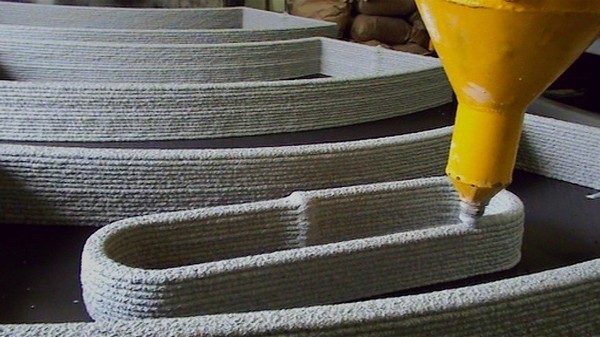
The construction material differs from a conventional 3D printer by the material used and the dimensions — the working surface is the site of a building site or workshop, and it prints with a cement mixture.

There are also structural differences due to the specifics of the material - in particular, there is no need for a heating element in a 3D construction printer. Such devices allow you to print objects of almost any given form quickly and without unnecessary complications, for ordinary serial construction it is simply impossible using standard mixtures.
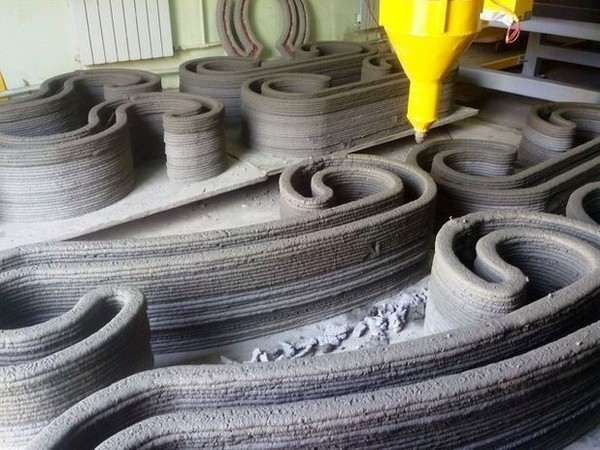
Start
We are interested in any promising use of 3D printers, so that as soon as information about the use of 3D printing in construction began to appear on the network, we quickly found the people involved and agreed to cooperate. It was especially nice to know that there are companies in Russia that are thoroughly involved in building 3d-printers and produce a very high-quality product.
')

In Russia, the pioneer of 3D printing in commercial use was the company SpecAvia . Her staff developed and tested a prototype of a 3D construction press and carried out a test print.

We agreed on cooperation, and sent a service engineer to Yaroslavl for training, where he learned a lot of useful things. The training program included, in particular:
- Brief introductory course on the interface and functionality of the control software
- Instructing on the SheetCam program, which converts files into a layer-by-layer format perceived by the printer
- Instructing how to manage the printer in Mach 3, directly during the printing process
- Calibration - setting zero points in different areas of the printed field
- Concrete feed adjustment during printing
- Instructions for operation and maintenance of the mechanical part of the printer
- Troubleshooting
- Preparation of working mixtures

First steps in practice
Having received the first order in this area, we sent our employee to the buyer - to Kazakhstan, to install the first construction 3D-printer S-6045 and train the customer’s personnel to work with him.
Before shipment, make sure that the packaging is secure. Transport companies do not always handle cargo with care, it’s better not to risk it once more - in our case, during transportation only a few contacts departed, but it was worth our nerves and a few hours later, which is lower. If during transportation something breaks, the costs can be much more serious.

In the first days of a business trip, our employee checked the completeness of the equipment delivered, made measurements of the premises to calculate the installation, agreed with the customer’s representatives on the location of the future printer, entered them into the course of the planned work and began the installation.

Marking was made for installation and drilled holes in the floor under the rack.

After carrying out the preparatory work and the installation of the uprights, it was the turn of installation of the supporting beams. The structural elements are very weighty and for such work you need several people, which is also better to agree with the customer in advance, otherwise delays are inevitable. In the end, people were found and everything was done.

Another difficulty that may arise when installing a 3D construction printer is an uneven floor. In the absence of a flat plane, print quality is unlikely to be good. The obvious way out of this situation is leveling the floor — it is hardly possible at the printer installation stage. There is simply no time for this.
It was just such a surprise, namely, a significant roll of the floor, that we found after leveling.

It was decided to weld the framework of steel profile, which would compensate for the unevenness.
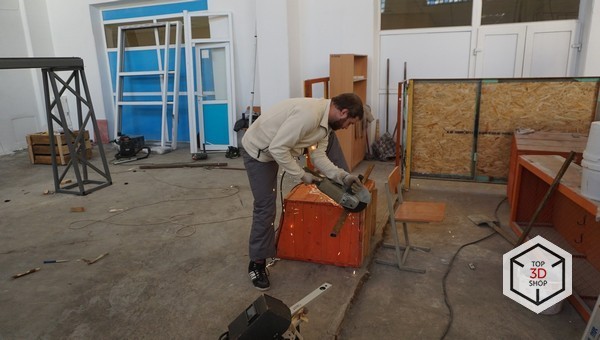
It also took some time. In the end, the necessary profile was brought, properly cut and welded.
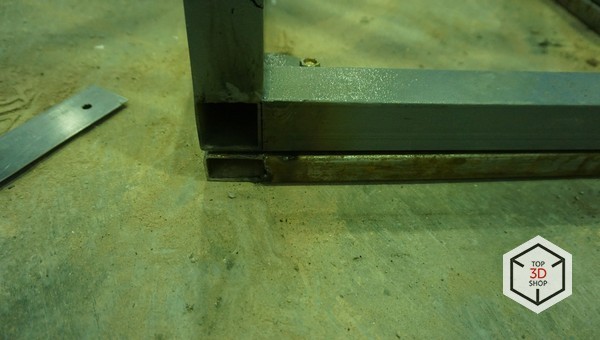
To install the leveling frames, the stands with beams already assembled had to be lifted by a construction crane.
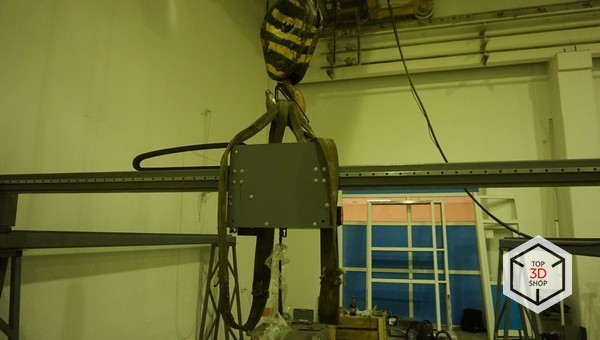
Were mounted calipers and bearings for them, after which it was the turn of the portal beam. Here again the help of a construction crane came in handy, but I had to tinker with it - because of the configuration of the room and the design features of the crane, I had to climb to the ceiling and turn off the limit switches, which limit it, crane, mobility. The ceiling there is about 15 meters.

The installation of the extruder boom and the eccentrics controlling it took some time - the welds on the boom itself interfered with the connection with the platform's mating slots. I had to align with the grinder.
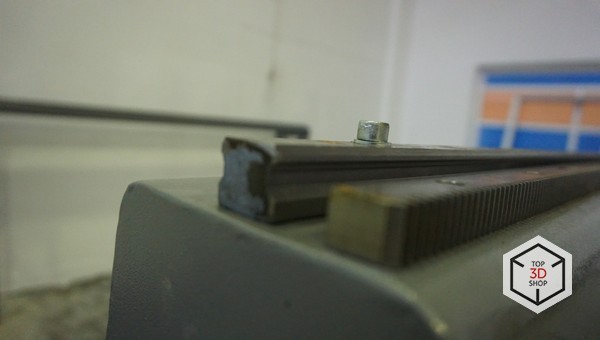
At the final stage, all connections were tightened, an extruder bunker was mounted, and an optional part of the structure - a concrete mixer.
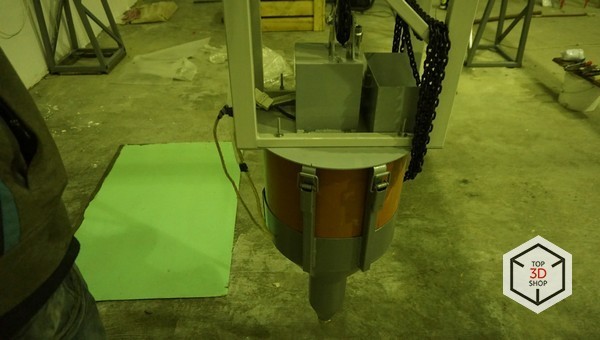
Connecting power and control did not immediately go smoothly. However, the letter with the request sent to Yaroslavl in SpetsAvia responded promptly, providing all the necessary recommendations for connection, despite the working day that had already ended.

During the inspection, it turned out that during transportation, the contacts on one of the system boards had moved. After the restoration of contacts, everything worked.
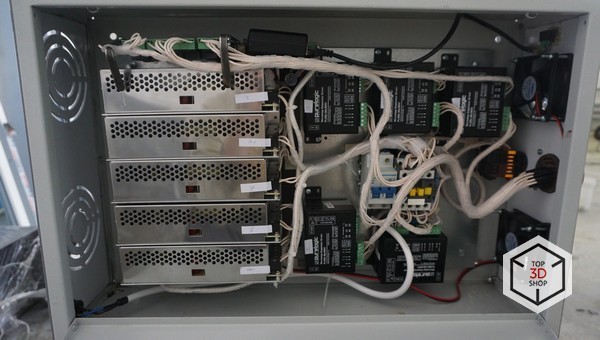
After connecting and checking the connections, grease nipples were mounted on all bearings, protective shields of eccentric booms and complete plates, on which the installation itself was completed.
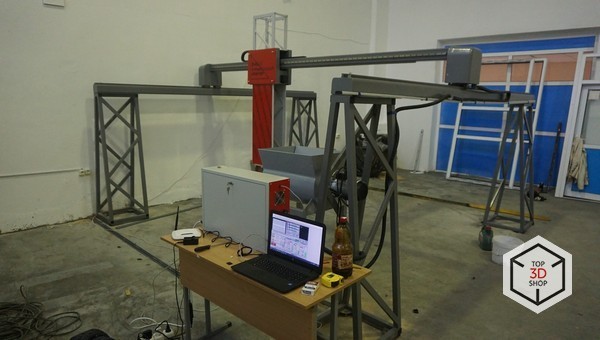
Next - install and configure software, check functionality. Installation of the substrate for the hanging wires connecting the moving parts - it is not provided in the delivery package, but we are going to meet customers.

Customer training staff in handling the printer during the trial run.
The customer decided to try a mixture of his own authorship, contrary to our recommendations. Well, the master is the master. The solution, quite expectedly, crawled. However, the printer itself is working properly and there are no complaints to us.

In the process of training client personnel to work with software, we wanted to demonstrate how a 3D printer works with the right mix, but there were no ingredients for the new mix.
Speaking of mixtures:
Personnel training and delivery of the object were the most positive. Customer representatives were completely satisfied with the equipment supplied and installed and satisfied with the cooperation.
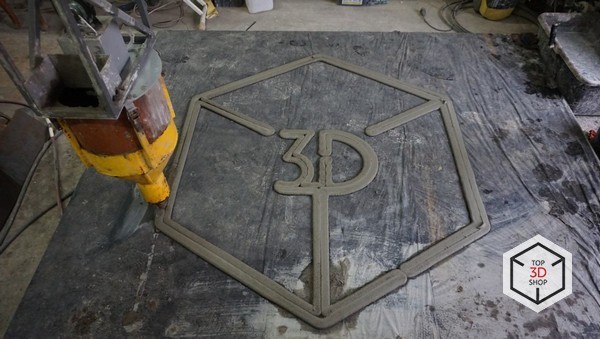
It was a rewarding experience. We have identified for ourselves a few rakes, on which we will not step on the second time - and this will make further work more pleasant and efficient. Undoubtedly, construction 3D-printing equipment is a very interesting area of activity, both in terms of the result obtained, and in that it requires maximum ingenuity and a non-standard approach from those who deal with it.
Want more interesting news from the world of 3D technology?
Subscribe to us in the social. networks:




Source: https://habr.com/ru/post/369867/
All Articles